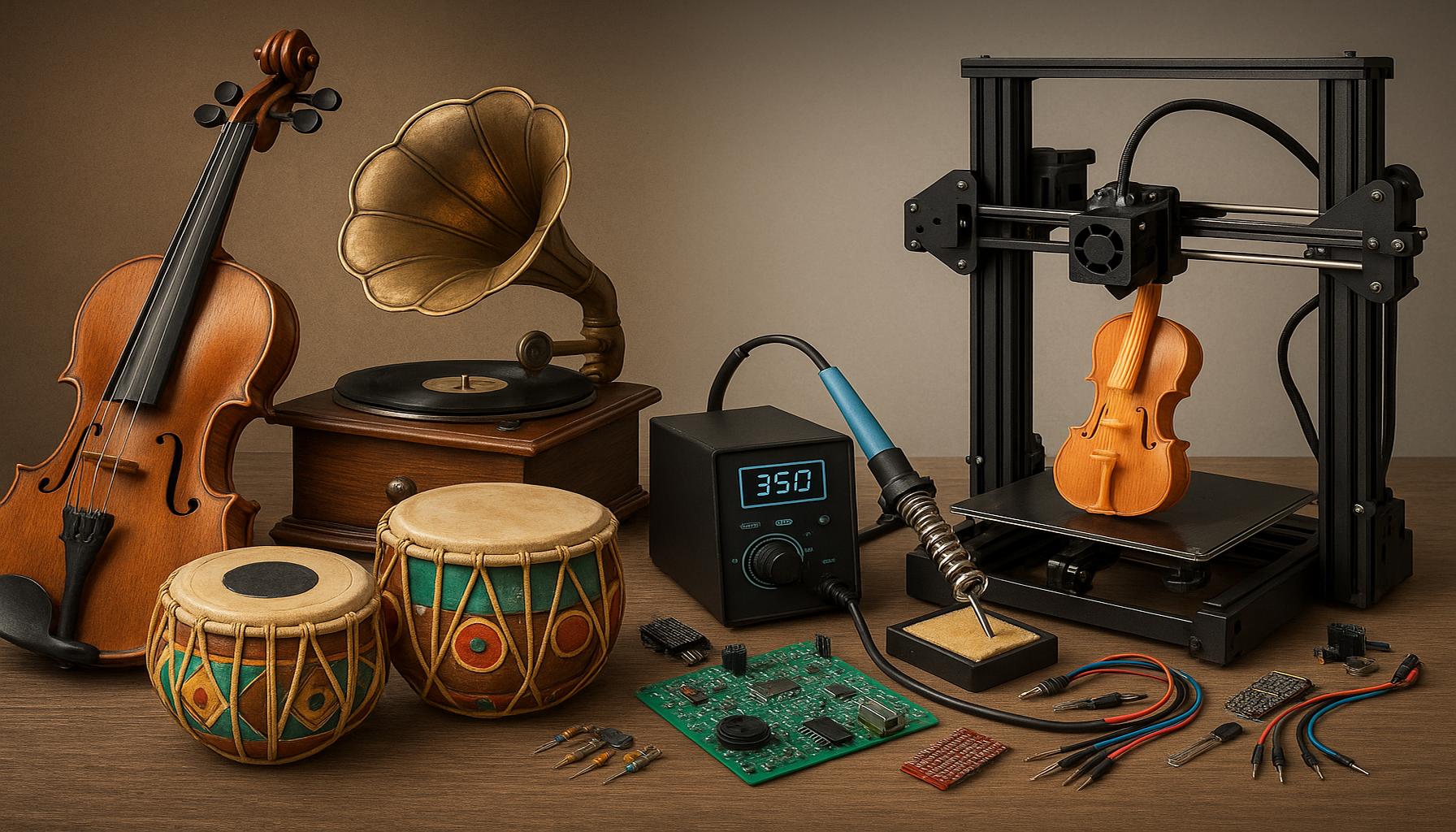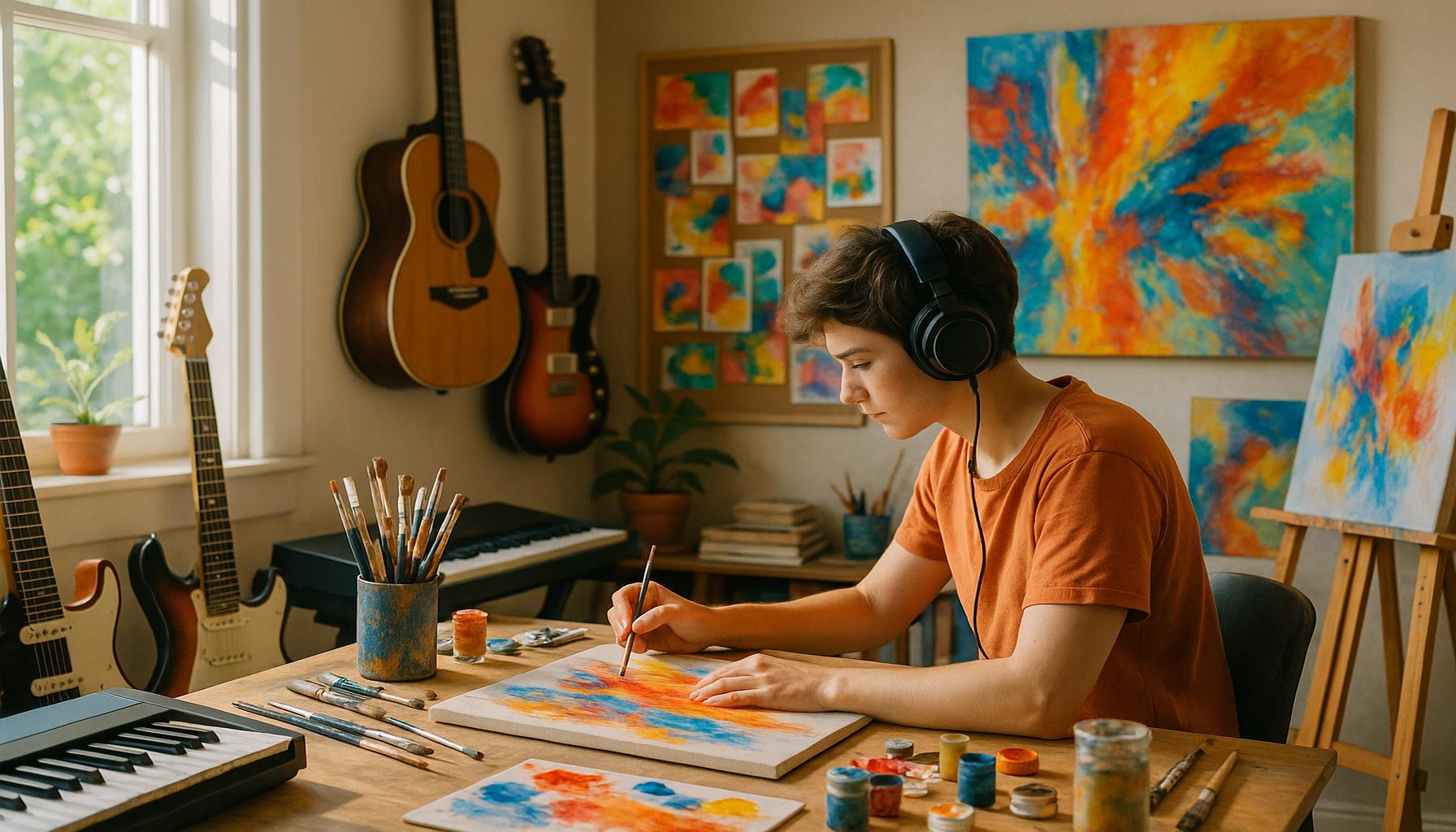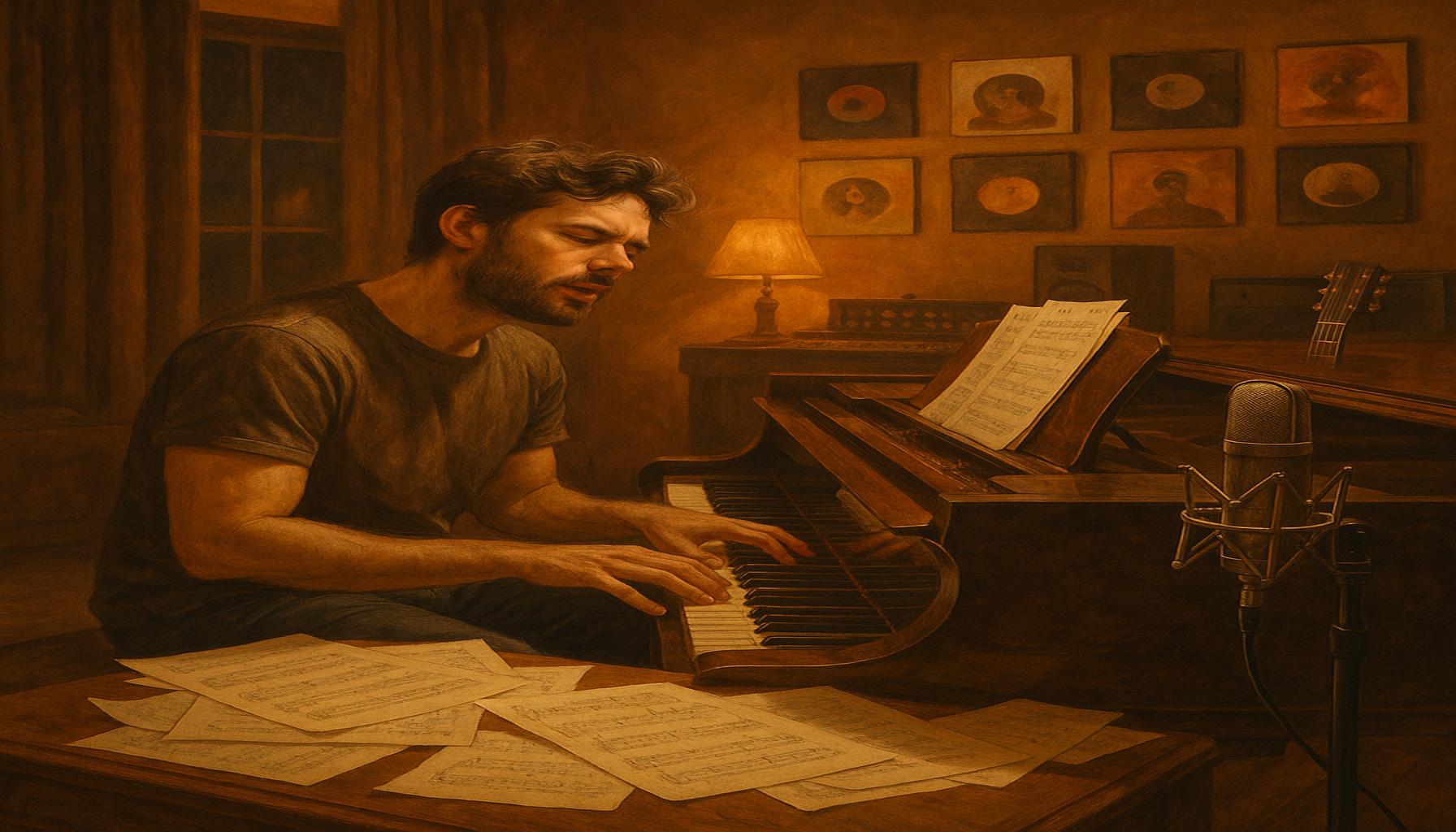The Evolution of Music in DIY Projects: From Traditional to Modern Techniques

Revolutionizing Music Creation
The evolution of music production has ushered in a new era of creativity, accessibility, and innovation. With the advent of DIY projects, musicians can now navigate their artistic journeys without the constraints that once limited them. This transformation traces back to a confluence of traditional practices meeting groundbreaking technology, reshaping how music is crafted and shared.
Traditional Techniques
Historically, music creation often involved handmade instruments, where artists would craft their tools, learning to play on guitars built from local woods or pianos handed down through generations. Acoustic recordings in makeshift studios captured the nuances of live performance, leading to a raw, authentic sound. Classic songwriting methods emphasized storytelling and lyrical depth—core elements that still resonate with many musicians today. Artists like Bob Dylan and Johnny Cash exemplify this era, using simple tools to create profoundly impactful music.
Modern Innovations
Today, the landscape is dramatically different. Musicians can leverage digital audio workstations (DAWs) like Ableton Live, Logic Pro, and GarageBand to record, edit, and produce music right from their laptops or home studios. The implementation of MIDI technology has expanded creative possibilities, allowing artists to create intricate compositions by digitally manipulating sounds and instruments. Additionally, platforms such as SoundCloud and Bandcamp enable musicians to share their work globally without the need for traditional record label backing. This shift not only democratizes music creation but also fosters a spirit of collaboration, with artists from various backgrounds coming together through online forums like Splice and Kompoz.
Integration of Genres
As technology allows for easy access to diverse sound libraries, the lines between genres continue to blur. The fusion of hip-hop, jazz, electronic, and rock has led to the birth of new genres like lo-fi hip-hop and electronic jazz. For example, artists such as Anderson .Paak and Thundercat seamlessly integrate various styles, appealing to broader audiences and encouraging further experimentation. This genre-bending reflects not just musical evolution but also cultural shifts, illustrating how artists are breaking boundaries that once seemed immovable.
The combination of traditional skills and modern technology has opened doors for a fresh wave of musicians who are eager to explore and create. As we dive deeper into this vibrant landscape of DIY music projects, we can see how creativity and experimentation flourish in this environment. The accessibility of tools, resources, and communities fuels the passion of these artists, inviting listeners to engage with music in increasingly dynamic ways. Are you ready to embark on this musical exploration and see where the journey leads?
DISCOVER: Click here to learn about the mental health benefits of gardening
The Changing Landscape of Music Production
The realm of music production has transitioned from artisanal craftsmanship to a bustling ecosystem shaped by technology and creativity. DIY music projects have fostered an environment where aspiring artists are not merely consumers but active creators. With this advancement comes a myriad of tools and methods that challenge the conventions established by past generations. The democratization of music making has shifted the focus from exclusivity to inclusivity, enabling artists from all walks of life to participate in the musical narrative.
Accessible Tools for Aspiring Musicians
The modern musician is equipped with a diverse arsenal of tools that are both user-friendly and affordable. The rapid diffusion of technology has made it possible for budding artists to produce high-quality music without breaking the bank. Key components of this new toolkit include:
- Mobile Recording Apps: Applications such as Anchor and GarageBand empower users to record, edit, and share their music directly from their smartphones. These platforms offer an intuitive interface that simplifies the recording process, making it possible for anyone with a storytelling impulse to create their own soundtracks.
- Online Collaboration Platforms: Websites like Soundtrap and BandLab enable musicians to collaborate in real-time, breaking geographical barriers that historically separated artists. This not only promotes diversity in sound but also fosters a global exchange of ideas, since a musician from New York can seamlessly work with another artist based in London or Tokyo.
- Affordable Equipment: The emergence of budget-friendly microphones, MIDI controllers, and digital interfaces has allowed more individuals to set up home studios that rival professional establishments. Emerging artists can now find quality gear at local music stores or online marketplaces, empowering them to capture their unique sound and vision.
This availability not only aids musicians in perfecting their sound but also fosters a strong sense of community. Artists frequently share tips and techniques from their own experiences, effectively creating an endless loop of inspiration and innovation. For example, platforms like YouTube boast countless tutorial channels that provide aspiring musicians with tips on mixing, mastering, and songwriting, which were once only accessible through formal education.
The Role of Social Media in Music Promotion
Furthermore, the rise of social media has transformed how music is marketed and consumed. Platforms such as YouTube, Instagram, and TikTok break down the barriers that once kept DIY musicians from reaching their audiences. A musician can now curate their personal brand and showcase their work directly to fans without needing a major label. Talented individuals can build followings based on their unique sounds, styles, and identities, often leading to lucrative careers without the backing of traditional music labels.
Viral trends often originate from these platforms, catalyzing new musical styles and movements. For instance, the lo-fi chill and bedroom pop genres have gained massive popularity largely due to social media exposure, reflecting a broader cultural shift towards authenticity and relatability in music production. Artists like Clairo and Billie Eilish have thrived in this arena, utilizing platforms to showcase their raw talent and engage with their fan bases.
The evolution of music in DIY projects illustrates a dynamic interplay between tradition and innovation. While the essence of storytelling and craftsmanship remains, the methods and platforms empower a broader spectrum of artists. As we navigate further into this extraordinary evolution, it becomes clear that the intersection of technology and musical creativity continues to redefine the foundations of music itself. The future of music production not only beckons with new possibilities but also ensures that every voice, regardless of background, has a chance to be heard and celebrated.
The Fusion of Traditional and Modern Techniques
As we delve into the evolution of music in DIY projects, it becomes clear that artists are no longer confined to traditional methods. The blending of these approaches has created innovative music-making possibilities that appeal to a diverse range of creators. For instance, traditional instruments like the guitar and piano can now effortlessly merge with modern technology, utilizing software like Ableton Live or GarageBand for recording and mixing. This fusion exemplifies how DIY projects can harness the essence of music creation while embracing cutting-edge technology.
Access to Resources and Information
With the rise of online platforms, aspiring musicians have unprecedented access to an array of resources. DIY enthusiasts can find tutorials, forums, and production software that were once difficult to obtain. YouTube, blogs, and podcasts dedicated to music-making are now commonplace, allowing for knowledge-sharing on everything from instrument crafting to digital audio processing. This democratization of information fosters a collaborative spirit, enabling individuals to learn from one another and expand their music production skills beyond the traditional sphere.
Community Engagement and Collaboration
The shift towards modern DIY music projects is also evident in community engagement. Local music scenes often host workshops, encouraging participation and the exchange of ideas. Collaborations between traditional musicians and modern producers create a unique dialogue where creativity flourishes. These interactions not only enrich the participants but also help in preserving traditional styles while innovating them through modern filters. The impact of this collaborative approach is profound, as it symbolizes a vibrant community that champions both heritage and innovation.
Embracing New Tools and Techniques
Furthermore, the integration of tools such as loop pedals, synthesizers, and drum machines signifies a departure from exclusively acoustic sounds. Music can now be tailored using a variety of software and hardware that cater to personal styles. The advent of virtual instruments allows DIY musicians to experiment without the need for expensive studio time. This accessibility encourages more people to engage in music-making, ultimately expanding the artistic community and further developing unique sounds that reflect individual experiences.
As we observe this evolution, it’s crucial to celebrate the past while embracing the changes that modern technology brings to the music-making process.
| Category | Advantages |
|---|---|
| DIY Music Techniques | Combines traditional and modern methods for unique sound |
| Community Collaboration | Fosters creativity and sharing of ideas among musicians |
DISCOVER MORE: Click here to dive into the world of musical expression
The Influence of Streaming Services on DIY Music Production
The rise of streaming services has revolutionized the distribution and accessibility of music, which has significant implications for DIY projects. Platforms such as Spotify, Apple Music, and SoundCloud have created an unprecedented level of exposure for independent artists. Musicians can now upload their work directly to these platforms, eliminating the necessity for traditional distribution channels and allowing for a quicker and more personalized connection with their audiences.
This shift can be seen in the increasing trend of artists leveraging these platforms for audience engagement. By providing behind-the-scenes glimpses into their DIY projects, musicians foster deeper connections with fans. The use of playlists, which often highlight user-generated content alongside mainstream hits, gives lesser-known artists a chance to be discovered in ways that were unimaginable just a decade ago. In fact, statistics reveal that over 60% of listeners discover new music through curated playlists, making them an essential tool for DIY musicians.
The Resurgence of Analog Techniques
Interestingly, as digital music production continues to develop, there has been a noticeable resurgence of interest in analog techniques. Many DIY musicians are returning to the roots of music creation, utilizing vintage equipment and analog recording methods to create a unique authenticity in their sound. The charm of imperfections often found in analog recordings contrasts sharply with the polished output of contemporary digital production, which resonates with audiences longing for a more organic auditory experience.
Elements such as tape machines and vintage synthesizers are increasingly gaining popularity among indie musicians. This trend, often referred to as the “lo-fi” movement, has given artists an opportunity to experiment with their sound and cultivate a distinctive presence in a saturated market. The lo-fi aesthetic is not simply about the quality of the music but also about the storytelling element involved; it encompasses a nostalgic feel that many listeners crave today.
Community-Based Approaches to Music Creation
Furthermore, the concept of community has taken on new dimensions within the DIY music scene. Local collaboration spaces, often referred to as makerspaces or creative hubs, have emerged across cities in the United States. These spaces foster collaboration among musicians, offering access to shared resources for music production, including instruments and recording equipment. Through workshops and jam sessions, participants not only hone their skills but also create supportive networks, blending various musical influences that can lead to innovative collaborations.
The emphasis on sharing knowledge and resources has transformed the approach to music education. Initiatives like local nonprofit organizations and community colleges offer classes that explore everything from songwriting to production techniques. These programs often charge little to no tuition, making music education accessible to anyone, regardless of their financial background. For example, the Community Music Center in San Francisco provides affordable classes, encouraging music creation for diverse populations and fostering inclusivity.
As DIY music projects continue to evolve, the intersecting roles of technology, social media, and community dynamics contribute to an ever-expanding landscape. It is this convergence that fuels an ongoing transformation, allowing passionate individuals to redefine their musical practices. The newfound freedom and resources not only bring modern techniques to the forefront but also celebrate the rich tapestry of traditional approaches that continue to inspire today’s creators.
DISCOVER MORE: Click here for sustainable gardening tips
Conclusion
The journey of music within DIY projects is a fascinating evolution that highlights the dynamic interplay of traditional techniques and modern innovations. From the grassroots efforts of musicians in local communities to the sophisticated digital productions facilitated by advanced technology, the landscape of DIY music is richer than ever. The advent of streaming services has democratized access to music, providing artists an unparalleled platform to share their creations with the world. This accessibility encourages a more intimate relationship between artists and fans, replacing traditional gatekeeping with a direct connection that fosters genuine engagement.
The revival of analog techniques within this digital age speaks to a longing for authenticity, showcasing the beauty found in imperfections and the organic qualities of a lo-fi aesthetic. As artists experiment with vintage equipment, they embrace their heritage while pushing the boundaries of sonic creativity. Meanwhile, community-based approaches highlight the importance of collaboration and shared resources, exemplified by makerspaces and educational initiatives that empower individuals to explore their musical identity.
As we reflect on these evolving trends, it becomes clear that the DIY music scene is a tapestry woven together by the threads of innovation, nostalgia, and collaboration. It encourages a continuous exploration of sound that resonates with diverse audiences, inviting them to not just listen, but to actively participate in a movement that defines what music can be in the modern era. This ongoing evolution promises to bring even more exciting transformations, urging aspiring musicians and seasoned artists alike to embrace both the past and the future of music creation.


